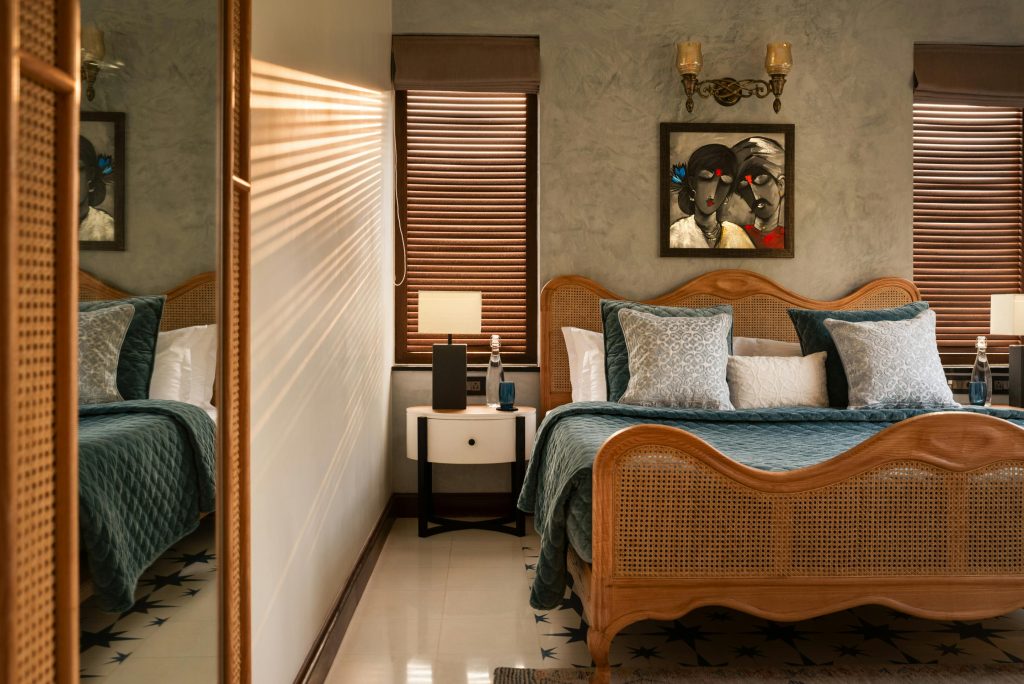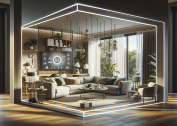For many professionals, a good night’s sleep is more elusive than ever. With rising stress levels, increased screen time, and demanding schedules, quality rest often gets pushed aside. Yet, sleep experts agree that your environment plays a critical role in how well you sleep. Designing bedrooms that promote restful sleep has become a growing trend, with more people focusing on intentional bedroom design as a wellness strategy. From the use of circadian lighting to biophilic design, professionals are rethinking how their bedrooms can serve as spaces of true restoration.
This article explores current trends and practical strategies for creating bedrooms that promote restful sleep, grounded in research and actionable design principles.

Why Bedroom Design Matters for Restful Sleep
The bedroom is more than a place to rest—it directly affects how deeply and consistently we sleep. Studies have shown that environmental factors like lighting, color schemes, noise levels, and even room layout influence sleep quality. According to the National Sleep Foundation, creating a sleep-conducive bedroom can significantly improve sleep duration and overall wellness.
Professionals, especially those with fast-paced lifestyles, are realizing that designing bedrooms that promote restful sleep is not just about aesthetics—it’s a health investment.
Key Design Trends for Better Sleep
1. Circadian Lighting Systems
One of the fastest-growing trends in sleep-focused bedroom design is circadian lighting. Unlike traditional bulbs, these systems mimic natural daylight cycles—bright and cool-toned in the morning, warm and dim in the evening. This supports the body’s natural sleep-wake rhythm.
- How to apply: Consider smart bulbs that shift temperature automatically throughout the day.
- Why it matters: Research from the Sleep Health Journal highlights that light exposure directly impacts melatonin production, which regulates sleep cycles.
2. Minimalist Layouts for Mental Calm
Clutter in the bedroom is linked to stress and restlessness. Minimalist layouts with streamlined furniture and neutral colors are becoming popular as a way to reduce overstimulation before bedtime.
- Practical tip: Keep only essentials in the bedroom—bed, nightstand, and perhaps a reading chair.
- Trend insight: Interior designers note a growing demand for Scandinavian-inspired minimalism in sleep spaces.
3. Natural Materials and Biophilic Design
Bringing nature indoors through biophilic design has gained traction. Wood finishes, organic fabrics, and plants contribute to a sense of calm and connection to nature.
- Why it works: A Frontiers in Psychology study found that natural elements in interior spaces reduce stress and promote relaxation.
- How to apply: Use bamboo bedding, cork flooring, or a few low-maintenance plants like snake plants or peace lilies.
4. Tech-Free Zones
Professionals often bring laptops and phones into bed, but this disrupts sleep. Many are now designing bedrooms as tech-free zones to reduce blue light exposure and nighttime distractions.
- Tip: Keep charging stations outside the bedroom. Use an analog alarm clock instead of your phone.
- Trend spotlight: “Digital detox bedrooms” are gaining attention in wellness design circles.
5. Personalized Climate Control
Temperature plays a huge role in sleep quality. Adjustable bedding systems, cooling mattresses, and smart thermostats are popular investments.
- Science-backed fact: The Sleep Foundation recommends a room temperature between 60–67°F (15–19°C) for optimal sleep.
- Emerging trend: Smart climate technology that adjusts based on body temperature sensors.
Practical Steps to Designing Bedrooms That Promote Restful Sleep
Here are actionable steps anyone can take to redesign their sleep space:
- Choose the right mattress and bedding – Opt for breathable fabrics like organic cotton or linen that regulate body temperature.
- Control light exposure – Use blackout curtains and dimmable lights for nighttime relaxation.
- Incorporate calming colors – Soft hues like muted blues, greens, or earthy tones have been linked to reduced stress.
- Soundproof where possible – White noise machines, rugs, or heavier curtains can reduce disruptive noise.
- Keep it clutter-free – Organized spaces promote mental clarity and relaxation.
The Role of Personalization
While trends guide the general direction of design, personalization is key. For instance:
- Someone sensitive to noise may prioritize soundproofing, while another person may focus on lighting solutions.
- Cultural preferences, work schedules, and lifestyle habits all influence how a restful bedroom should look and feel.
The most effective designs for promoting restful sleep are those tailored to individual needs.
The Growing Market for Sleep-Optimized Design
The wellness and interior design industries are increasingly intersecting. According to Fortune Business Insights, the global sleep aids market is projected to grow significantly in the coming years, and much of this is tied to lifestyle design. Consumers are investing not just in mattresses but in entire ecosystems of sleep-friendly furniture and technologies.
Designers, architects, and wellness professionals are collaborating to create bedrooms that actively promote recovery, aligning with the broader trend of health-centered living.
Conclusion
Designing bedrooms that promote restful sleep is no longer just a luxury—it’s a necessity for professionals navigating high-stress, fast-paced environments. From circadian lighting to minimalist layouts, the growing emphasis on intentional design reflects a collective recognition: sleep is a cornerstone of health and productivity.
Whether you adopt biophilic touches, embrace tech-free spaces, or adjust your room’s climate, small design choices can create big shifts in how you rest. The key is combining current design innovations with personal needs to create a sleep sanctuary that works for you.
References
- National Sleep Foundation. Creating a Sleep-Friendly Bedroom. https://www.thensf.org
- Sleep Health Journal. Light Exposure and Melatonin Regulation. https://www.sleephealthjournal.org
- Frontiers in Psychology. Biophilic Design and Stress Reduction. https://www.frontiersin.org









